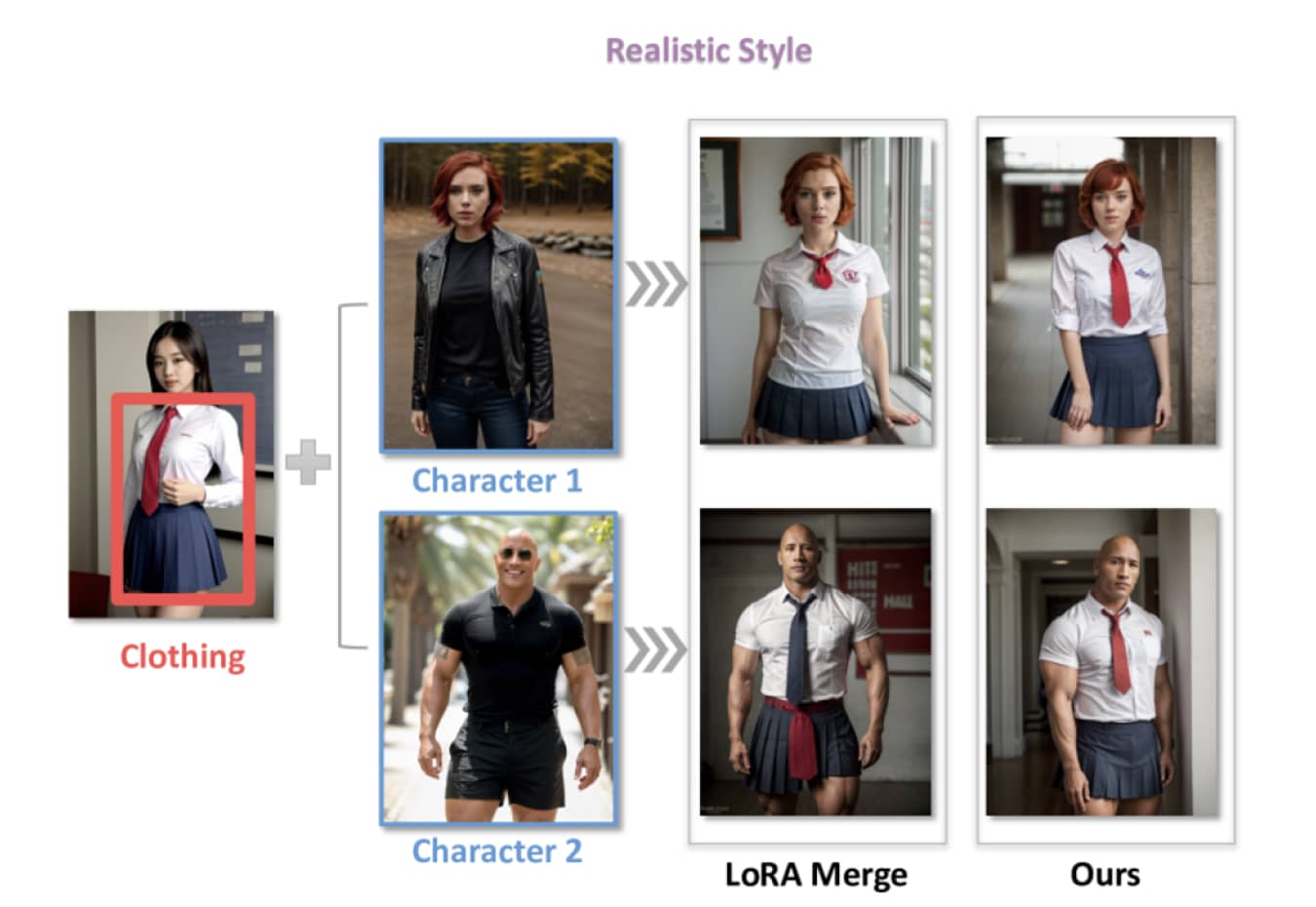Feb 28, 2024
Free
|
Paper
Paper Details
Author(s):
Ming Zhong, Yelong Shen, Shuohang Wang, Yadong Lu, Yizhu Jiao, Siru Ouyang, Donghan Yu, Jiawei Han, Weizhu Chen
Publishing Date:
Table of Contents
1. What is it?
This paper investigates multi-LoRA composition through a decoding-centric perspective. Multi-LoRA composition involves blending different elements like characters, clothing, and objects into a cohesive image using the Low-Rank Adaptation (LoRA) technique. The paper proposes two learning-free approaches, LoRA Switch and LoRA Composite, that utilize either one or all LoRAs at each denoising step to facilitate compositional image synthesis.
2. How does this technology work?
The paper mainly focuses on multi-LoRA composition for image generation using diffusion models. The paper proposes two training-free methods, LoRA Switch, and LoRA Composite, that utilize either one or all LoRAs at each denoising step to facilitate compositional image synthesis. LoRA Switch involves selectively activating a single LoRA during each denoising step, with a rotation among multiple LoRAs throughout the generation process. LoRA Composite involves calculating unconditional and conditional score estimates derived from each respective LoRA at every denoising step. These scores are then averaged to provide balanced guidance for image generation, ensuring a comprehensive incorporation of all elements.
3. How can it be used?
The technology can be used by creators in various fields such as photography, illustration, social media influencers, animators, designers, small company owners, startups, movie makers, fashion designers, 3D artists, and people learning AI image, video, and audio generation. The proposed methods can help these creators blend different elements like characters, clothing, and objects into a cohesive image with precision and clarity. This can revolutionize how users interact with and utilize generative text-to-image models for creating tailored visual content.
4. Key Takeaways
The key takeaways from the paper are:
The introduction of multi-LoRA composition through a decoding-centric perspec tive, proposing LoRA Switch and LoRA Composite methods that utilize either one or all LoRAs at each denoising step to facilitate compositional image synthesis.
The establishment of the ComposLoRA testbed, the first testbed specifically designed for LoRA-based composable image generation, featuring six varied categories of LoRAs and 480 composition sets.
Extensive automatic and human evaluations reveal the proposed methods' superior performance compared to the prevalent LoRA merging approach.
5. Glossary
LoRA: Low-Rank Adaptation technique used in fine-tuning image synthesis with minimal computational load.
Diffusion Models: A class of generative models adept at crafting data samples from Gaussian noise through a sequential denoising process.
Classifier-Free Guidance: Balances the trade-off between diversity and quality in diffusion-based image generation by adjusting the score function based on textual conditioning.
LoRA Merge: A dominant approach for presenting multiple elements cohesively in an image by linearly combining multiple LoRAs into a unified LoRA.
LoRA Switch: This method involves selectively activating a single LoRA during each denoising step and rotating among multiple LoRAs throughout the generation process.
LoRA Composite: A method that involves calculating unconditional and conditional score estimates for each LoRA individually at every denoising step to ensure balanced guidance throughout the image generation process.
5. FAQs
a. What is the main focus of the paper?The paper's main focus is on multi-LoRA composition through a decoding-centric perspective for image generation using diffusion models.
b. What are the proposed methods in the paper?The paper proposes two learning-free methods, LoRA Switch, and LoRA Composite, that utilize either one or all LoRAs at each denoising step to facilitate compositional image synthesis.
c. How does the evaluation framework work?The paper leverages GPT-4V's capabilities to serve as an evaluator for composable image generation by comparatively evaluating two text-to-image models based on their ability to compose different elements into a single image.
Disclaimer:
This text has been generated by an AI model, but originally researched, organized, and structured by a human author. The grammar and writing is enhanced by the use of AI.
